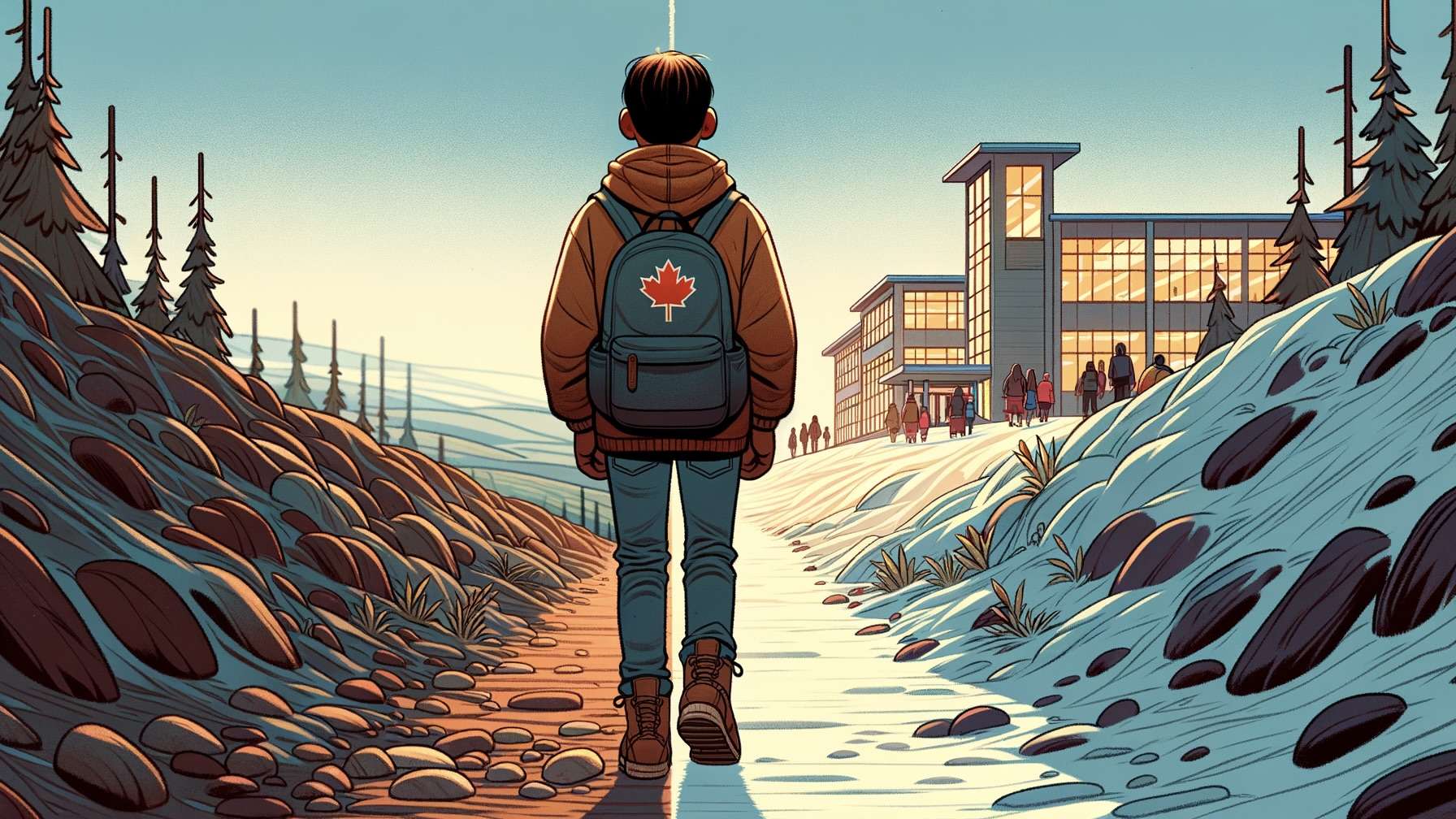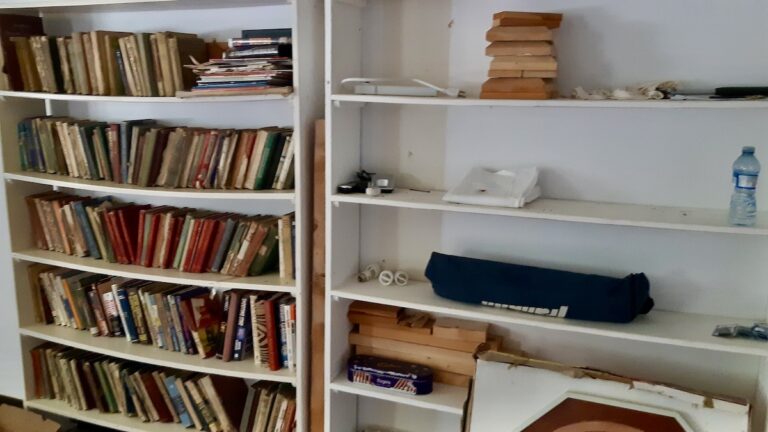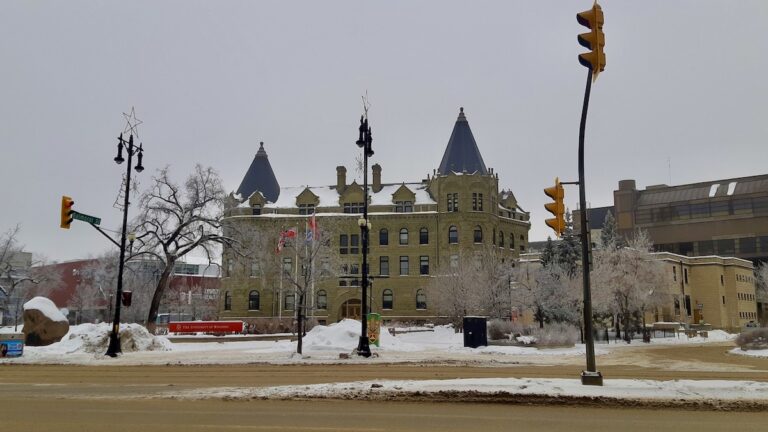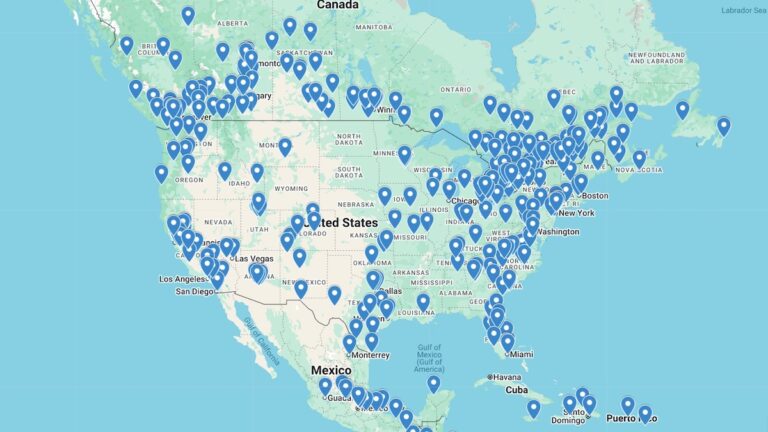
Decline and Out-Migration from Northern Ontario’s Arts Sector?
Summary:
This draft report examines the increasing trend of artists leaving the Northern Ontario arts sector, particularly those residing in Northern Local Services Boards communities and unorganized territories, for opportunities in other jurisdictions.
Our initial analysis reveals a complex interplay of economic challenges, infrastructural deficiencies, governance and policy limitations, and socio-cultural factors that contribute to what appears to be increasing out-migration. A severe lack of adequate funding, limited access to professional resources, restrictive legislative frameworks governing unorganized territories, and a perceived lack of value for the arts in some communities are identified as key drivers in damaging sustainability for the arts and culture sector.
The departure of northern artists poses significant risks to the cultural vibrancy, economic development, and unique identity of Northern Ontario. The report concludes with recommendations aimed at strengthening the Northern Ontario arts sector and fostering an environment conducive to artist retention and growth.
Introduction:
Northern Ontario possesses a distinct cultural landscape, rich in artistic traditions that reflect the region’s diverse heritage, including a strong presence of Indigenous artistry. The arts play a key role in expressing Northern Ontario’s identity, preserving its history, and fostering community connections.
Across Ontario, the arts and culture sector is a significant contributor to the provincial economy. However, a concerning trend has emerged: artists are increasingly leaving Northern Ontario, including those in unorganized territories, seeking opportunities elsewhere. This out-migration has potentially detrimental implications for the region’s cultural vitality and its capacity for economic diversification.
This draft report aims to explore some of the multifaceted reasons behind this phenomenon, focusing on economic challenges, infrastructural deficiencies, governance and policy impacts, and socio-cultural factors that influence artists’ decisions to relocate. Understanding these drivers, policymakers, arts funding organizations, and community leaders can develop targeted strategies to support the Northern Ontario arts sector and encourage artists to remain and thrive within the region.
The Landscape of the Northern Ontario Arts Sector:
The Northern Ontario arts sector encompasses a wide array of artistic disciplines and activities, reflecting both contemporary practices and deep-rooted cultural traditions. Visual arts, performing arts, literature, music, and diverse forms of Indigenous art are prevalent throughout the region. Community-engaged art also plays a significant role, fostering collaborative relationships between artists and community members.
Arts and culture hold considerable potential for community building and economic development in Northern Ontario. Creative placemaking initiatives can redefine communities, enhancing their quality of life and attractiveness, and fostering place-based creative economies. Furthermore, the arts are linked to tourism and can contribute to the economic resilience of the region. However, the arts sector within Northern Services Boards communities and unorganized territories faces unique circumstances.
The governance realities in these areas, particularly the potential limitations imposed by Ontario’s Northern Services Boards Act, present distinct challenges. Notably, arts-related activities may be classified as prohibited economic development under this act, hindering their growth and sustainability. The limited local governance in these areas can also impact the overall sustainability of arts initiatives. This suggests that the legislative framework governing unorganized territories in Northern Ontario may inadvertently impede arts development by not fully recognizing its economic and social value.
Push Factors: Reasons for Artists Leaving Northern Ontario:
A confluence of factors compels artists to leave Northern Ontario, particularly those in Northern Services Boards communities.
Economic Challenges: Limited funding opportunities and the accessibility of grants from major arts funding bodies like the Ontario Arts Council (OAC) and the Canada Council for the Arts pose a significant hurdle. Data reveals a severe funding disparity for the Kenora-Kiiwetinoong area and the broader Far North Region compared to the rest of Ontario.
The percentage of total Ontario funding allocated to these regions by both the Canada Council for the Arts and the OAC has been consistently low over the years. For instance, in 2023-2024, only three projects in the Kenora-Kiiwetinoong area received grants from the Canada Council for the Arts, amounting to a mere 0.08% of the total funding for Ontario. Similarly, the OAC’s Far North Region also receives a modest allocation, ranging from 0.37% to 0.44% of total OAC funding. This underrepresentation underscores the need for increased funding allocations and the development of targeted grant programs specifically designed for these underrepresented regions. Artists in areas like the Kenora-Kiiwetinoong region face direct challenges in accessing arts funding due to this limited financial support and the low value of individual awards.
Precarious income and the absence of sustainable career pathways further contribute to the economic strain on artists in Northern Ontario. Many artists across Ontario experience low incomes, with half earning below $40,000 annually. Financial stress is a common reality for artists, and many must engage in multiple jobs to sustain themselves. This financial instability is likely amplified in Northern Ontario due to the limited local economic opportunities and the scarcity of arts funding. The economic viability of pursuing an artistic career in Northern Ontario is further jeopardized by the potentially higher costs of living in remote areas compared to more urbanized parts of the province. While specific data on the cost of living for artists in Northern Ontario is limited in the provided material, it is reasonable to infer that the increased costs of transportation, goods, and services in remote communities, coupled with limited income opportunities, create a significant financial burden.
Infrastructural Deficiencies: The lack of adequate arts spaces, including studios, galleries, and performance venues, presents another significant challenge. Research indicates a clear need for various types of creative spaces in Northern Ontario, such as retail areas, discipline-specific studios, and spaces for exhibitions, performances, and rehearsals.
A preference for public spaces located in cities or towns over rural settings has also been noted. Historically, communities in Northern Ontario have faced a limited supply of dedicated arts spaces. This scarcity restricts artists’ ability to create, exhibit, and perform their work within the region, potentially driving them towards areas with better facilities. Limited digital infrastructure and connectivity also contribute to the challenges faced by artists in Northern Ontario. The lack of reliable broadband internet access disproportionately affects these communities. The increasing importance of digital platforms for artistic creation, dissemination, and market engagement has exposed a significant gap in digital capacity and a lack of support for digitization within the arts sector.
Transportation barriers and associated costs further exacerbate the difficulties. Increased transportation costs have been identified as a challenge for artists in the Kenora-Kiiwetinoong area. The vast distances across Far North and Northwestern Ontario often necessitate extensive travel for artists to attend meetings, collaborate with peers, and engage with communities, leading to substantial financial burdens.
Governance and Policy Impacts: The role and limitations of Local Services Boards (LSBs) significantly impact arts development in unorganized territories. Arts-related activities are frequently classified as prohibited economic development under the Northern Services Boards Act. This classification severely curtails opportunities for artists and culture sector workers to pursue their initiatives as viable economic endeavors.
LSBs themselves face limitations regarding economic development and community planning, lacking the authority to comment on these areas unless specifically designated. This suggests that the legislative framework governing these areas does not adequately recognize the economic contributions of the arts, thereby hindering their development. Furthermore, there may be conflicts or a lack of alignment between provincial arts policies and the specific needs of remote communities in Northern Ontario. The funding disparities and infrastructural challenges already discussed imply a potential mismatch. Policies and directives need to be flexible enough to allow communities to leverage funding in ways that effectively address their local needs.
Socio-Cultural Factors: Geographic and social isolation are pervasive challenges for artists in Northern Ontario. This isolation limits access to vital professional development opportunities and external support networks. The feeling of being disconnected from larger artistic communities can discourage artists and prompt them to seek more connected and vibrant environments elsewhere. The lack of professional networks and mentorship opportunities, particularly in remote areas like Kenora-Kiiwetinoong, further compounds these issues. While capacity building and training are recommended to help artists and organizations secure funding, the scarcity of local opportunities hinders their accessibility.
Many artists and organizations in Northern Ontario report feeling under-resourced, undervalued, underdeveloped, and underutilized. A lack of public understanding and advocacy for the arts also contributes to this sense of being undervalued. If artists perceive that their work is not appreciated or adequately supported by their local communities, they may be more inclined to relocate to places where the arts are more valued. Systemic barriers faced by Indigenous artists and artists from equity-seeking groups also play a significant role. The underrepresentation of women and Indigenous artists in the Far North Region’s labor force highlights these challenges.
While efforts to promote diversity and inclusion are recommended, pervasive socio-cultural and legislative policy barriers rooted in systemic racism and the enduring legacy of colonialism continue to impede Indigenous artists’ ability to thrive.
These systemic inequities push artists from equity-seeking groups to seek more inclusive and supportive environments in other jurisdictions.
The Unique Situation in Northern Services Boards Communities/Unorganized Territories:
Artists in Northern Services Boards communities and unorganized territories face specific challenges due to the absence of municipal governance structures. This lack of dedicated municipal government often translates to limited access to typical municipal resources and support for arts and culture. These areas often rely on volunteer-run organizations such as Local Services Boards, which may have limited capacity and resources to prioritize arts development.
This absence of a dedicated municipal structure creates a gap in advocacy and support for the arts sector at the local level. Furthermore, the lack of municipal status can create hurdles in accessing funding and support compared to incorporated areas. Artists and arts organizations in unorganized territories may find themselves ineligible for certain funding programs or at a disadvantage in competitive processes.
Local Services Boards are explicitly stated not to be municipalities or local boards for the purposes of some Acts, which can restrict their access to certain resources and funding streams. The Northern Services Boards Act itself, as previously discussed, does not prioritize or facilitate the development of arts and culture initiatives. The classification of arts as non-economic development and the limited powers of LSBs, which may not include explicit support for arts and culture 19, further underscore this challenge.
Pull Factors: Attractions of Other Jurisdictions:
Artists may be drawn to other jurisdictions for a variety of reasons that address the challenges they face in Northern Ontario. Urban centers and other provinces often offer better funding ecosystems with more diverse funding sources, including municipal, private, and corporate support. While the research material does not provide a direct comparison of arts funding across all Canadian provinces, it suggests that Ontario’s per capita arts funding has been historically low compared to some other provinces.
Artists may perceive a greater likelihood of securing funding and building sustainable careers in regions with more robust financial support for the arts. The availability of infrastructure and resources in other jurisdictions is also a significant draw. Urban centers typically boast a higher concentration of arts infrastructure, including galleries, studios, and performance venues, along with better digital connectivity and access to specialized services. This provides a more conducive environment for artistic creation and presentation.
Stronger artistic networks and markets in other regions can also attract artists. Urban centers often have larger and more active artistic communities, facilitating networking, collaboration, and peer support. Established art markets, including galleries, buyers, and audiences, offer greater opportunities for artists to showcase and sell their work. A perceived greater recognition and value for the arts in other jurisdictions can also influence an artist’s decision to relocate. If artists feel their work is more appreciated and that there is a stronger cultural emphasis on the arts in a particular region, they may be more inclined to move there. Finally, the presence of specific relocation incentives or support programs in other provinces or territories, while not detailed in the provided research, could also act as a pull factor.
Programs offering financial assistance or other forms of support to artists who choose to relocate can make the prospect of moving more attractive. For example, while not in the arts specifically, regions like Vermont and Saskatchewan have offered incentives for remote workers, suggesting a potential model that could be adapted for artists.
Impact of Artist Out-Migration on Northern Ontario:
The out-migration of artists has several significant negative impacts on Northern Ontario. The departure of creative individuals represents a substantial loss of cultural capital and artistic talent for the region. Artists contribute unique perspectives, skills, and cultural knowledge, and their absence diminishes the overall creative capacity of Northern Ontario. This can lead to reduced vibrancy and diversity within communities. A thriving arts scene is a key element in creating lively and attractive places to live.
The departure of artists can result in a less diverse range of artistic expressions and fewer cultural events, making Northern Ontario communities potentially less appealing to both residents and visitors. This out-migration also has negative effects on local economies and tourism. Arts and culture are significant drivers of tourism, and a decline in artistic activity can lead to fewer cultural attractions and events, directly impacting tourism revenue and local businesses that benefit from visitor spending.
Ultimately, the out-migration of artists poses challenges to preserving and promoting Northern Ontario’s unique cultural identity. Artists play a vital role in interpreting and expressing the region’s heritage, including its important Indigenous traditions. Their departure can hinder the transmission, evolution, and celebration of this cultural identity, weakening the region’s ability to maintain its distinctive character.
Recommendations and Strategies for Artist Retention and Sector Strengthening:
To address the issue of artist out-migration and strengthen the Northern Ontario arts sector, several strategies should be considered:
Enhancing Funding and Support: Advocacy efforts should focus on securing increased and targeted funding from both provincial and federal arts councils specifically for Northern Ontario, with particular attention to the unique circumstances of artists in LSB areas. Grant programs should be developed that are tailored to the specific needs and challenges faced by artists in remote communities. Additionally, capacity building initiatives, such as workshops and mentorship programs focused on grant writing and arts administration, should be implemented to improve the success rates of Northern Ontario artists and organizations in securing funding.
Developing Arts Infrastructure: Strategic investments are needed to support the creation and improvement of arts spaces and digital infrastructure throughout Northern Ontario. This includes developing and supporting shared spaces and community hubs that foster artistic collaboration and provide access to necessary resources.
Policy and Governance Reforms: A comprehensive review of the Northern Services Boards Act should be undertaken, with the aim of recognizing and supporting arts as a vital component of both economic and community development. Improved coordination and alignment between different levels of government and arts organizations are also crucial to ensure that policies effectively address the needs of the Northern Ontario arts sector.
Strengthening Networks and Opportunities: Support for networking initiatives and mentorship programs specifically designed for Northern Ontario artists should be enhanced to foster connections and provide guidance. Platforms should be created and supported to promote Northern Ontario artists and their work to broader regional, provincial, and national markets.
Community Engagement and Advocacy: Efforts to raise awareness within Northern Ontario communities about the value and impact of the arts should be intensified. Fostering greater local support and appreciation for artists’ contributions is essential to creating a welcoming and encouraging environment.







